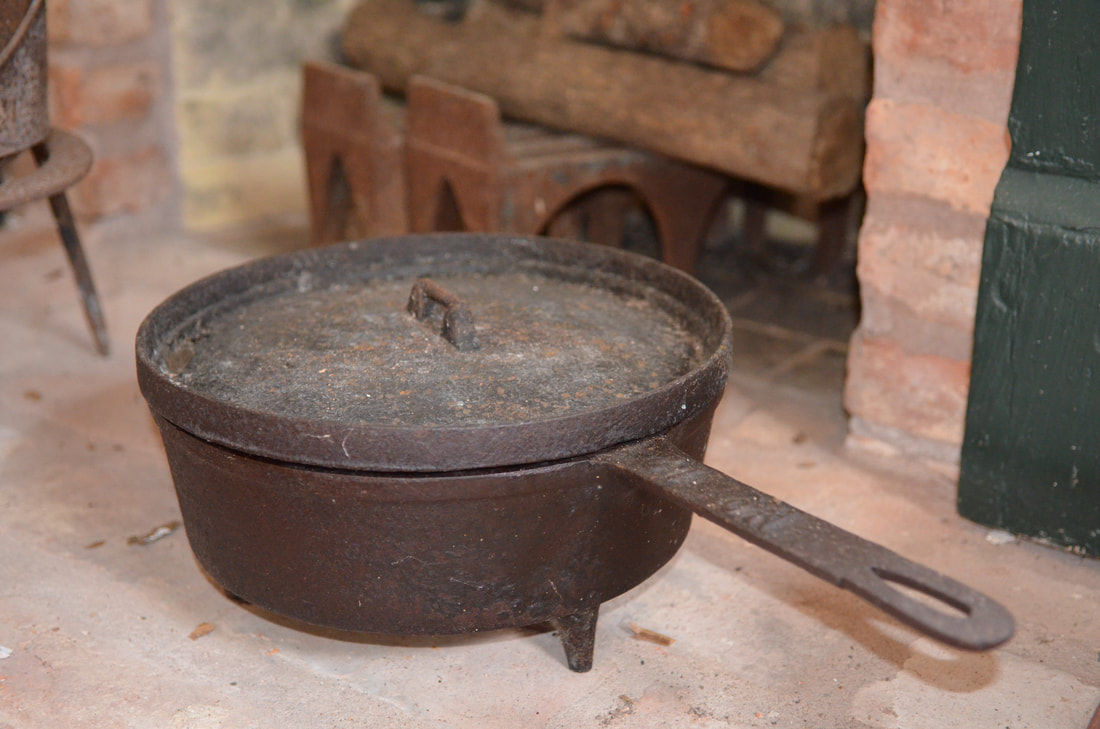- Home
- About
-
TRAVEL TRUNKS
- TRAVEL TRUNK 1 Evolution of Cajun and Creole Food
- TRAVEL TRUNK 2 Household Technology and Material Used by African Americans in the 1800s
- TRAVEL TRUNK 3 The Lives of Enslaved House Servants
- TRAVEL TRUNK 4 Death and Mourning in Black Communities of the 19th Century
- TRAVEL TRUNK 5 African Americans Subsistence and Hunting Before the 1900s
- TRAVEL TRUNK 6 Creole Cowboys of South Louisiana
- TRAVEL TRUNK 7 African American Experience in the Arts Before 1900
- TRAVEL TRUNK 8 Clothing Production within Enslaved Populations
|
The Creole Cowboys can be traced back to one of Southwest Louisiana’s oldest known ranches near the Atakapas District in 1747. When European explorers settled in the area, Louisiana was home to Native Americans throughout the region. Vast prairies stilled covered most of the land when André Masse, a native of Grenoble, France, arrived. Records show that he owned at least twenty Senegambians slaves, Creoles, and Native Americans. Owning slaves was a traditional practice in Louisiana. The state was a colony of France, Spain, and France again. President Thomas Jefferson purchased the Louisiana Territory from France in 1803 for 15 million dollars. The land which Native Americans had occupied for millennials was now being seized upon. Additionally, Enslaved Africans played a crucial role in building up the territory. They harvested rice, indigo, tobacco, and sugar, generating vast amounts of wealth for their owners. They also took care of the cattle and livestock. The Verchers, they were called in French, rode horses, worked the livestock, and performed agricultural labor that is still done in rural communities today. The cast-iron pot, riffle, and violin would have all been a part of everyday life on the ranch. Upon Masse’s death, he freed his slaves. These ex-slaves formed communities and crafted new traditions in Acadiana while maintaining their Creole heritage. That heritage today is on full display as you travel the Trailride circuit in South Louisiana. One of the largest Trailrides today is the Big Eight in Grand Marais, a Creole community in New Iberia, Louisiana. The Black Pot Cook-off Festival is an annual event held right here in Lafayette. This unique festival celebrates both Cajun and Creole dishes passed down since the first ranch in Acadiana. Not only is the food delicious, but there is toe-tapping dancing that includes Zydeco bands and anxious dancers. Cast Iron PotThis three-legged cast-iron pot would have been used for cooking hot meat, soups, or an all-time favorite of Creole cowboys, Cowboy Stew. Other meals would surely have been Jambalaya and black-eyed peas. You can see these pots on every Trailride in Louisiana being heated up to some hot and spicy Cracklins and Rice dressing. ViolinThis early 1900 violin would have been used by Creole musicians playing lively dance music out on the prairies or at a dance. Either way, the instrument is still being used by Zydeco musicians to stir up the Creole crowd at the Trailrides in Southwest Louisiana. ShotgunShotguns were common items for every household in early French and Spanish Louisiana. Pre-Civil War slaves were allowed to carry their owners' guns. However, Free People of Color bought and possessed rifles as their personal possessions. Creole Cowboys would have used rifles such as this one for work, personal protection, and hunting small animals. That tradition continues today on the first weekend of November until the end of February. Small games are placed in ice coolers to be cooked in the cast iron pots sizzling with green onions, garlic, red and green peppers drowning the steamy air with the aromatic smell of Creole cooking. References Charles Philippe Aubry, Royal Commandant in Louisiana Intendant Commissary Nicholas Denis Foucault Sieurs Dauterive, Masse. Land Grant, New Orleans. 1765. Documents in French, Certified Copy, dated 1830 Nov. 30, signed by Hilary B. Cenas, Register of the Land Office, New Orleans. In French. Rosemonde E. & Emile Kuntz Collection, French colonial period, 1655-1768, Manuscripts Collection 600, La Research Collection. https://digitallibrary.tulane.edu/islandora/object/tulane:12639 E.W. Kemble. African American Fiddler. 1886. Louisiana Digital Library, accessed October 17, 2020, https://louisianadigitallibrary.org/islandora/object/ull-lsa%3A44. Christian Woman’s Exchange. “The Creole Cookery Book”. T.H. Thomason. 1885. New Orleans. https://archive.org/details/creolecookerybo00unkngoog/page/n5/mode/2up?q=The+Creole+Cookery+Book. Accessed 15 October 17, 2020. Declaration of Joseph Sorrel and Clair Dauterive Dubuclet, Claim Papers S.W.D. [Southwestern District], T.14S. R.6-8E. & T.14S. R.9E. 58, Louisiana State Land Office, document no. 510.00174, Baton Rouge, La., https://wwwslodms.doa.la.gov/, accessed 17 September 2020. Joel H. Sandoz & Andrew Meynier. “Gunsmith Ad for Rifle.” The Opelousas Courier. November 26, 1887, sec. 1/8. Image provided by LSU, Baton Rouge. https://chroniclingamerica.loc.gov/data/batches/lu_moloney_ver01/data/sn83026389/00212474940/1887112601/0632.pdf. Some references derived from Secondary source “Teche: a history of Louisiana’s Most Famous Bayou” by Shane K. Bernard. 2016. Comments are closed.
|
AuthorsKerri Sullivan Leger |



